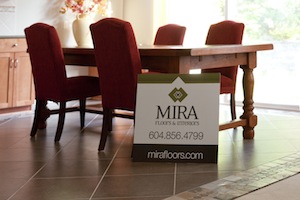All carpet is created from the conversion of fibres. Generally, fibres are spun into yarn and the yarn becomes carpet by being weaved, tufted, or bonded. Each fibre has unique benefits that will influence whether it is suitable for your space.
Nylon
The most popular carpet on the market as it’s present in about 60% of the carpets in the US. This fibre is highly durable and resists wear and tear well. Since nylon fibres are not inherently stain repelling, carpet manufacturers treat the fibres with a stain repelling system such as Shaw’s R2X.
Olefin
This fibre is less resilient than nylon but is still a strong and resistant choice. On the other hand, it’s less likely to fade in colour. Olefin is a great choice for an outdoor carpet as it is mold and mildew resistant plus it’s not very comfortable to walk on with bare feet.
Polyester
This fibre choice is becoming more popular as it is a more cost effective option than other fibres. Polyester is also less resistant than nylon. It shows damage and fades, so it’s not a good choice for high traffic areas. If your polyester carpet has a thick cut pile construction, it can be very soft to the touch.
Acrylic
This carpet option is not a widely used option. It looks and feels like it is wool, but is a less expensive substitute. It’s resistant to mold and mildew.
Wool
Made from all natural fibres, wool is the most expensive carpet option. It’s known for being a durable option that feels great. Both stain and dirt resistant, this carpet does fade in direct sunlight.
Posted on Feb 15 2012 2:02 pm by Kelsey Shipley
|
category: Carpet Flooring Flooring Guides |
2 Comments
 Grout lines can have a huge effect on the way the tile floor installation looks. There are no hard right or wrong answers for what size grout lines should be. However, there are some guidelines for the appropriate size grout joint for technical and aesthetic reasons. For example, when using tiles with imperfect edges larger grout lines should be used.
Grout lines can have a huge effect on the way the tile floor installation looks. There are no hard right or wrong answers for what size grout lines should be. However, there are some guidelines for the appropriate size grout joint for technical and aesthetic reasons. For example, when using tiles with imperfect edges larger grout lines should be used.
Recommended size grout lines
Natural stone: 1/16″ or 1/8″
Rectified (sharp) edge tile: 1/16 or 1/8″
Regular tile: 3/16″, 1/4″, up to 3/8″ or 1/2″
Saltillo or Mexican tile: 3/4″ or 1″
The size of grout line dictates the type of grout your installer (or if you’re DIY’ing it, you) will use. If your grout lines are 1/8″ or wider, use a sanded grout. As the name suggests, this grout has a fine sand added to it that prevent the grout from excessive shrinking while curing. Unsanded grout is only recommended for lines smaller 1/8″ wide.
Posted on Feb 7 2012 12:53 pm by Kelsey Shipley
|
category: Flooring Guides Tile Flooring |
Leave a comment
Much thought and effort is put into choosing a carpet, deciding which fibres and colours are best. Even though you won’t see it after installation, carpet pad (or carpet cushion) is an important part of carpet installation that should not be neglected.
Why is carpet pad important?
- It will make carpet feel feel thicker, softer, and more comfortable underfoot
- Carpet will last longer because carpet pad relieves stress on carpet backing and fibers
- Noise is reduced and carpet feels warmer due to extra thermal insulation
- Installation of carpet pad is often a condition necessary for the manufacturers warranty of new carpets
How do I know what carpet pad is right for me?
The type and thickness of carpet pad needed will vary based on the traffic level and carpet. Areas with light traffic like a bedroom are best suited to thicker and softer carpet pad. Hallways, living rooms, and other heavy traffic areas require a thinner and firmer cushion.
As a general rule, the carpet and rug institute recommends a maximum thickness of 7/16″ for cut pile residential carpet. For a low carpet like Berber or commercial carpets, carpet pad should be 3/8″ or less. Full details about the best carpet padding system for your preferred carpet are best reviewed with a salesperson.
Posted on Feb 2 2012 12:22 pm by Kelsey Shipley
|
category: Carpet Flooring Flooring Guides |
Leave a comment

 Grout lines can have a huge effect on the way the
Grout lines can have a huge effect on the way the